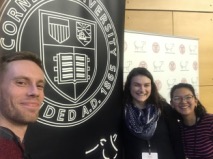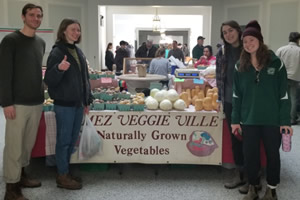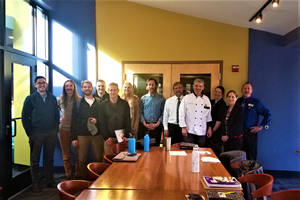By Theme:Arts and Literature | Campus Sustainability | Community Perspectives | Development | Economic Analysis | Ecosystem Analysis | Education | Energy | Environmental Justice | Food Systems | Geology of the Watershed | Green Architecture | Green Business | History of the Watershed | Invasive Species | Land Use Patterns | Public Policy | Recreation | Transportation | Water Quality
Food Systems
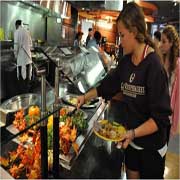 Local Food from Farm to School: Investigating the Skidmore Dining Hall's Local Partnerships
Local Food from Farm to School: Investigating the Skidmore Dining Hall's Local Partnerships
Maranda Duval and Jesse Moy (2011)
The Skidmore College Dining Hall has joined the local food movement by forming partnerships
with nearby farmers, processors, and distributors. In this study, we investigate the
history and effectiveness of these local partnerships and make recommendations on
how to expand and improve them in the future.
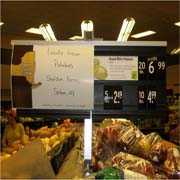 Understanding the Saratoga Springs Local Food System: An Analysis of its Local Food
Markets
Understanding the Saratoga Springs Local Food System: An Analysis of its Local Food
Markets
Erin Donnellan and Kate Ito (2011)
Increasing the consumption of local foods requires a detailed understanding of how
local food markets connect producers, distribution outlets, and consumers. Our analysis
reveals that there is not a single market for local foods, but rather a set of related
but distinct local food markets. Increasing local foods requires a multi-faceted approach
that reflects this complexity.
 Food Matters: Increasing the Availability of Local Food to Low Income Populations
in Saratoga County Through Community Organizations
Food Matters: Increasing the Availability of Local Food to Low Income Populations
in Saratoga County Through Community Organizations
Rebecca Drago and Laura Fralich (2011)
Low-income communities have limited access to affordable, healthy food options due to a variety of social, financial, and structural barriers. In Saratoga County, a number of local programs have emerged to address these issues. We analyze the effectiveness of these programs and provide suggestions for increasing their scope.
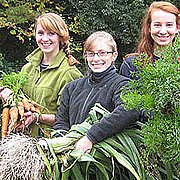 Skidmore Supported Agriculture: Bringing More Local Food to the Skidmore College Community
Skidmore Supported Agriculture: Bringing More Local Food to the Skidmore College Community
Will Dowling (2012)
The current industrial agriculture system in the United States has damaged the environment and distanced people from their food and farms. The organic and local food movements have arisen in response to this system’s flaws. Through programs such as Community Supported Agriculture, people are gaining access to wholesome, local food while reconnecting with their food and communities. This project seeks to provide the benefits of this service to the greater Skidmore College community.
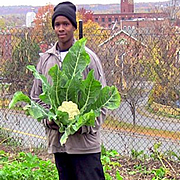 Social Capital and Soils in the Community Gardens of the Capital District: What they
put in and what they take out
Social Capital and Soils in the Community Gardens of the Capital District: What they
put in and what they take outOlivia Miller, Abby Smith, and Emily Hudspeth (2013)
What are the social and physical characteristics of community gardens in the Capital District? How does location (urban, suburban, rural?) influence the functionality of gardens? Using a survey, we examined gardener perceptions of and contributions to community, both inside and outside garden walls. We analyzed soil type and impervious surface cover data as well. We created a ranking system to determine those gardens that exhibit the “best” and “worst” characteristics. These results were mapped using GIS which allowed us to find correlations between location and garden success. We found that location has the most impact on impervious surface and community within the garden whereas soil type and engagement with the surrounding community are more variable and depend on other factors besides location.
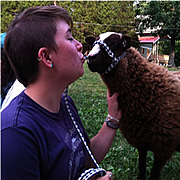 The New Farmer Movement
The New Farmer MovementRachael Bowen, Marie Nicol, and Will Conway (2014)
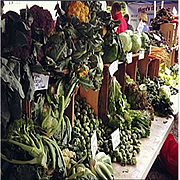 Are You What You Eat?
Are You What You Eat?Elizabeth Cohen, Olivia Powers, and Kana Miller (2014)
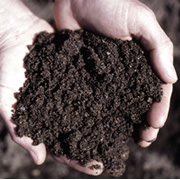 Understanding Disease Management and Farmers’ Perception of Soil Quality in a Rural
US Farming Community
Understanding Disease Management and Farmers’ Perception of Soil Quality in a Rural
US Farming CommunityTera Johnson, Aoife Semar, and Kate Jestin Taylor (2014)
Full report is not available. Please contact Karen Kellogg for more information.
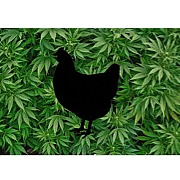 Backyard Chickens: Hipster Fad or Gateway to Sustainable Living?
Backyard Chickens: Hipster Fad or Gateway to Sustainable Living?Julietta Cole (2015)
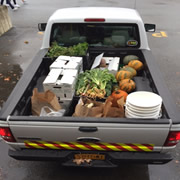 Feeding Mouths, Not Landfills: An Analysis of Food Recovery Efforts in Saratoga Springs
Feeding Mouths, Not Landfills: An Analysis of Food Recovery Efforts in Saratoga SpringsMelvin Alvarez, Jordan Chang, and Rebecca Fennel (2015)
 Bringing the Forest into the City: Creating a Community Food Forest for Saratoga Springs
Bringing the Forest into the City: Creating a Community Food Forest for Saratoga SpringsJames Brownie, Jared Herman, and Jessica Aleman (2015)
Food Forests are low-maintenance, multifunctional, edible landscapes based on the principles of permaculture that can meet the needs of both people and ecosystems sustainably. We assessed the feasibility of creating a Food Forest in the City of Saratoga Springs. We conclude that a Saratoga Springs Food Forest is desirable and feasible, and anticipate that our research and recommendations will guide future implementation.![Evolv[ing] Saratoga Springs: Composting Food Waste in Restaurants](/environmental_studies/capstone/projects/images/EscobarKaslowskiProject-2015.jpg)
Evolv[ing] Saratoga Springs: Composting Food Waste in Restaurants
Raquel Escobar and Melissa Kaslowski (2015)
We examined the successes and challenges for Evolv Composting LLC business of Saratoga
Springs, New York to raise awareness and encourage restaurants to compost their food
waste. Evolv is a newly established, local composting business developed by two Skidmore
students. We conducted surveys and interviews to better understand both the barriers
to restaurant participation in composting programs and the perceived benefits of the
program.
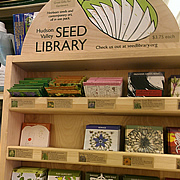 Seed Libraries
Seed Libraries Clarivel Gonzales, Carolyn Lois, & Helen Mebrate (2016)
We examined how seed libraries contribute to regional crop-species diversity and provide food-system resilience against drought, disease, and other negative impacts of climate change. We surveyed seed library coordinators from around the country and measured the proliferation of regionally adapted seeds. Seed libraries have increased nearly 300% since 2013. They provide alternative sources to genetically modified seeds, enhance biodiversity and crop resilience, and reconnect people with their food source.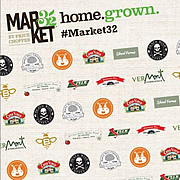
Got Local? Want Local? Consumer Marketing Analysis of Local Food
Rachel Dyckman, Olivia Gramprie, & Alyssa Hagerbrant (2016)
Local food (food grown within a region) is a growing environmental movement, and large
food retailers are trying to capitalize on this trend. Retailers use food labels
to capture consumer interest in local food. We evaluated local food availability
in several cities within the Capital Region of New York State, and assessed how stores
label and advertise local food. The majority of consumers will pay more for a local
product, but availability and labeling vary widely among retailers.
Alyssa Bueno, Ian Daly, and Tracey Wingate (2018)
New York State (NYS) is the third largest producer of dairy in the US. We examined
what sustainable agricultural practices (SAP) NYS dairy farmers are adopting, and
their motivations. NYS dairy farmers are currently struggling due to low milk prices,
and thus look for SAPs that contribute to the economic sustainability of an operation
over environmental sustainability. If dairy farmers are expected to reduce the carbon
footprint of their operations, they need more financial and technical support from
state and federal agencies to help implement more expensive SAPs.
Sydney Gellerman, Linnea Harris, Charlotte Hood, and Malcolm Kaletsch (2019)
The purpose of this research was to estimate the level of surplus on small-sized farms
in the Capital Region and find markets for this surplus to serve low-income consumers
in Saratoga County. Significant food is left either unharvested or unsold on regional
farms while many residents of Saratoga County experience low food security. Both of
these issues could be alleviated by providing farms with the resources needed to cost-effectively
harvest and distribute surplus to serve those in need.
25 by 25: An Action Plan for Achieving 25% Sustainable Food Procurement at Skidmore College by 2025
Isabel Blumenthal and Fin Tevlin (2019)
Skidmore has committed to 25% sustainable food procurement by 2025. Progress has been
made towards this goal but significant work remains, and achievement will require
increased expenditure. We assembled a portfolio of projects that address this goal
and assessed their feasibility. Together, these projects could account for the increased
sustainable food expenditure. Moreover, they support sustainable local food, increase
educational opportunities on campus, reduce environmental impact, and solidify institutional
purchasing commitments.
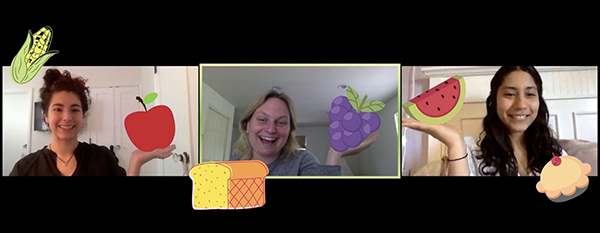 Food Insecurity Among Women and Resource Accessibility in the Capital District
Food Insecurity Among Women and Resource Accessibility in the Capital District
Isabella Gukeisen Jazmin Rendon, Olivia Glaser (2020)
We investigated how food insecurity in the Capital District affects women and resource accessibility at local, regional, and federal scales. We collected data through semi-structured interviews, surveys, and observation in Saratoga and Washington counties, NY. Our findings contribute to food studies literature and activists, policymakers, and food security stakeholders by providing knowledge on food-insecure women in a focused region and providing examples that reduce food waste and expand local networks among food pantries.
Paper is not available. For information, please contact the ESS Program Director.
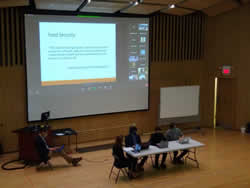 Food Resiliency and the COVID-19 Pandemic in New York’s Capital District
Food Resiliency and the COVID-19 Pandemic in New York’s Capital District
Sam Blumenthal, Taylor Goodell, Siddharth Nizamuddin & Lauren Winkler (2021)
The Covid-19 pandemic had negative impacts on food insecurity globally and in the United States and created operational challenges for food assistance organizations. We used literature reviews, reports from food assistance agencies, and semi-structured interviews to examine the innovations that food banks, food pantries, food non-profit organizations, and farms in New York’s Capital District have adapted to address the growing demand for their services.
Paper is not available. For information, please contact the ESS Program Director.
